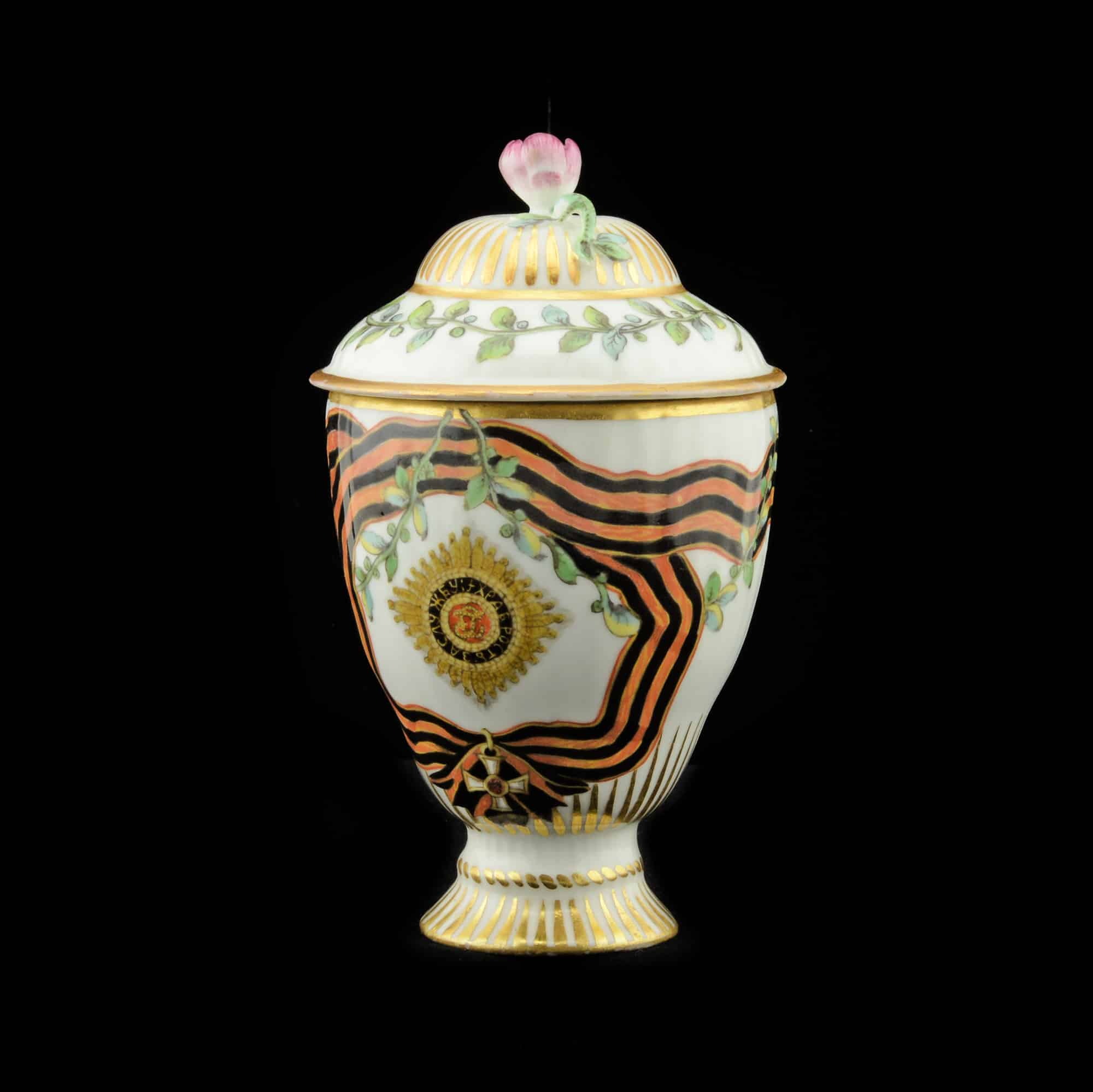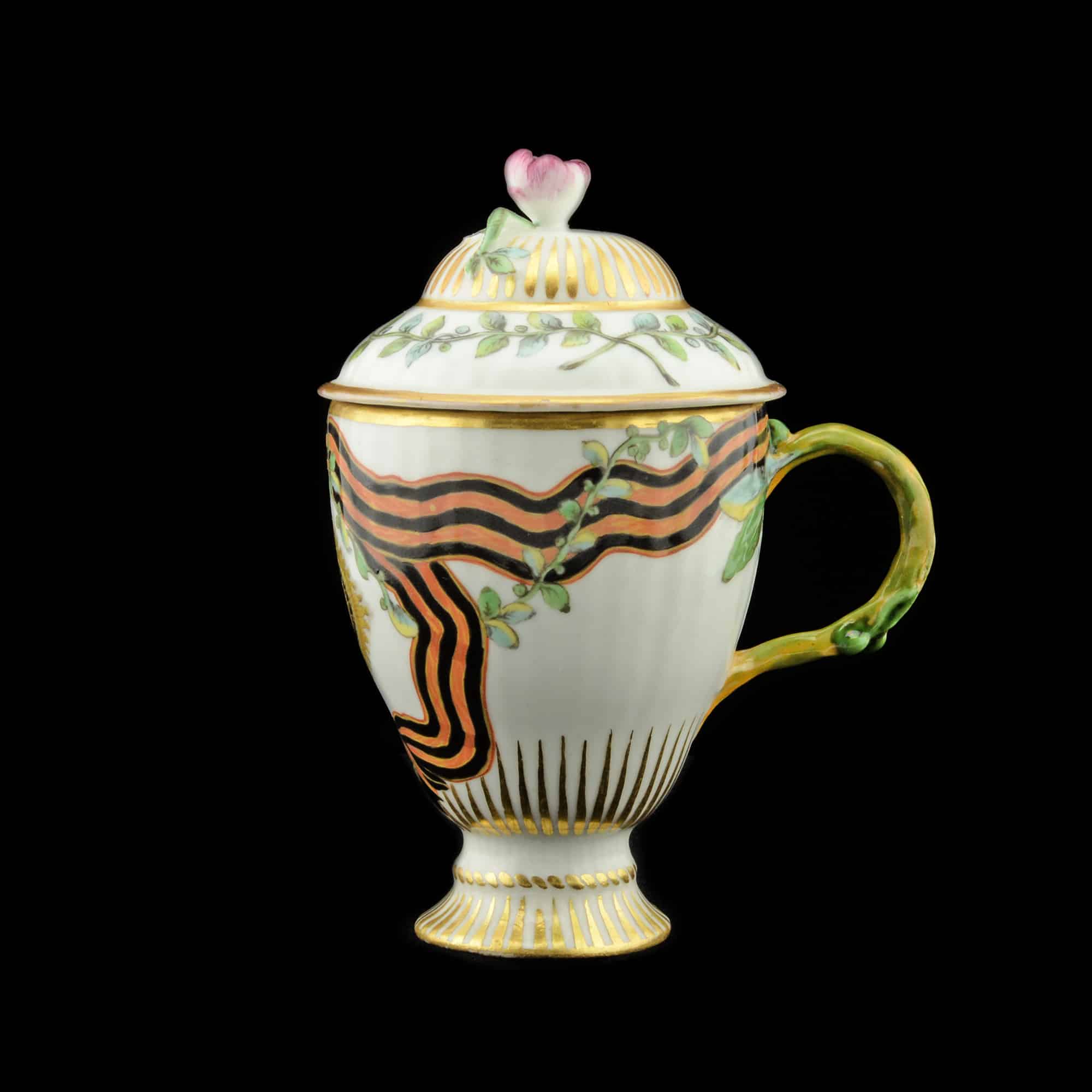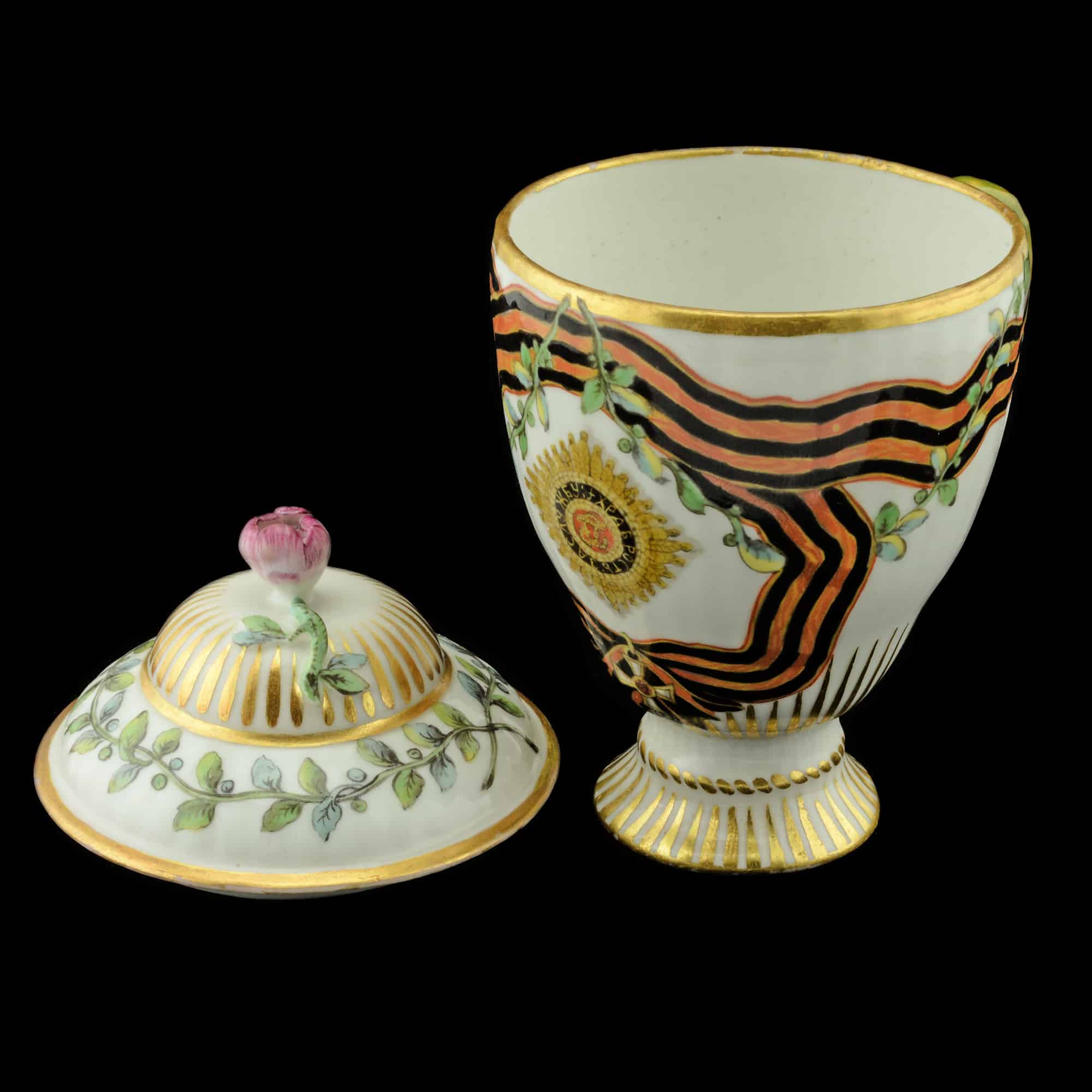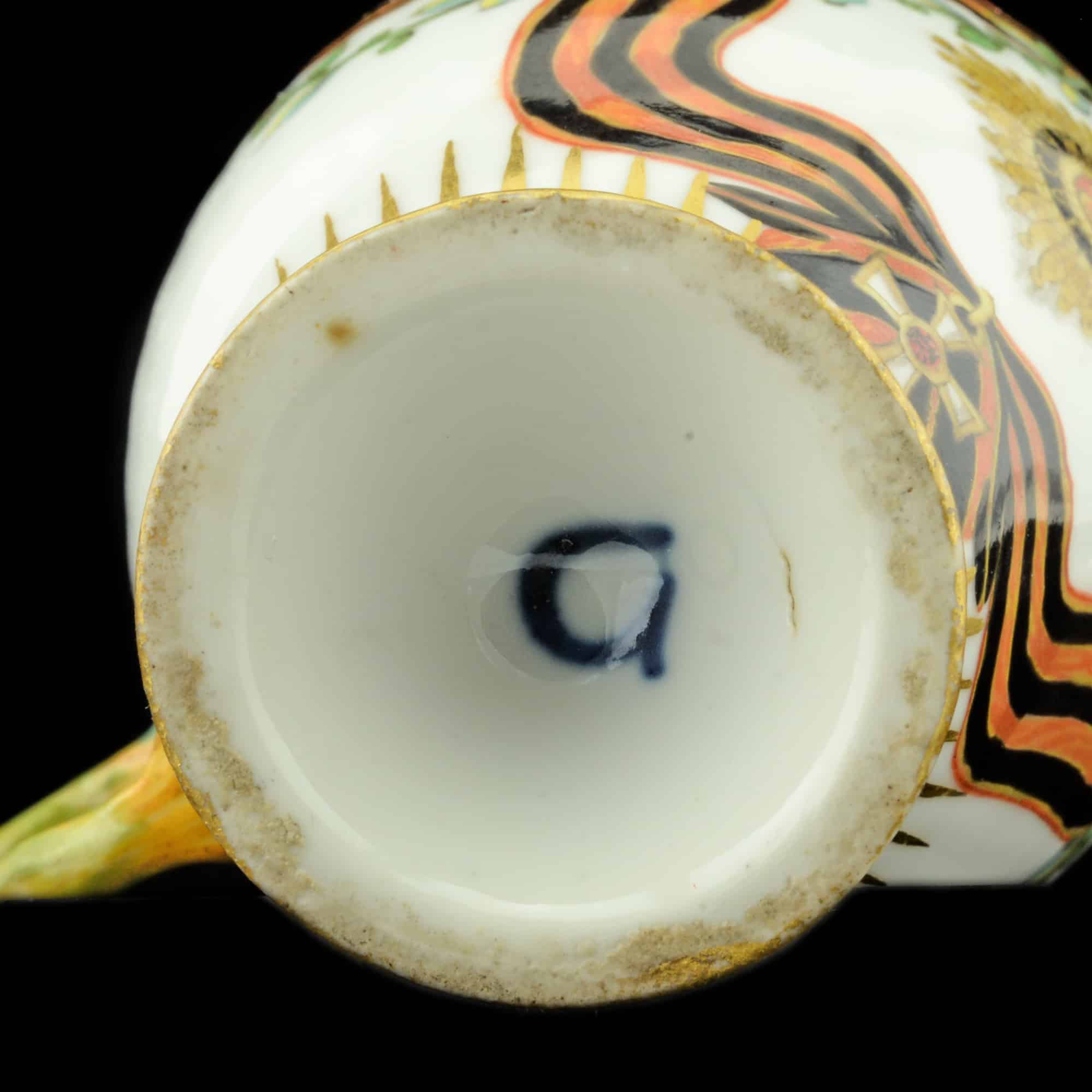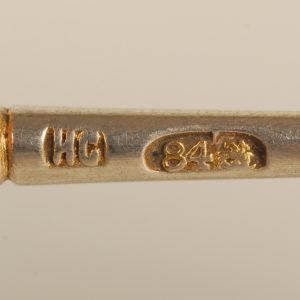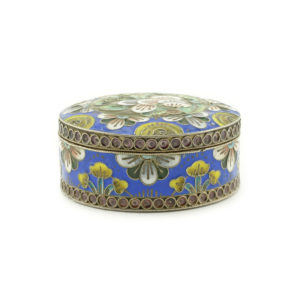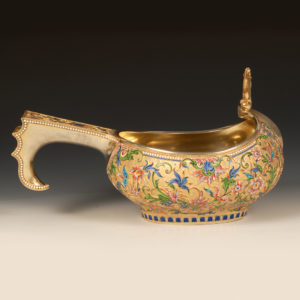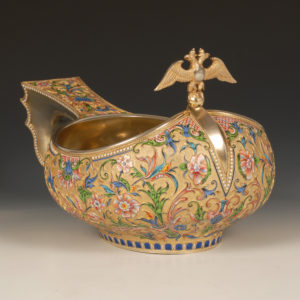Our Antiques
A rare Gardner covered ice cup from the Order of St George Service
To order by phone or get more info call us at +1 (425) 271-8950
Description
A covered Russian porcelain ice cup from the service for the Order of St George, Gardner, 1777-1778. The cup’s form based on those of the Berlin Service (given to Catherine II by Frederick the Great in 1772), the bowl painted with the orange & blackmoiré sash of the order interwoven with berried laurel & centering a star with the Cyrillic motto Za sluzhbu i khrabrost (For Service & Bravery), the handle molded in imitation of a rose branch & with a rose blossom terminal,the slip-on domed cover similarly decorated with a row of laurel leaves & centered with an exquisitely molded & painted magenta rose blossom, the underside of the cup with the blue factory mark & a circle & line mark impressed in the paste.Height: 4 ⅜” (11.1 cm)
Catherine II commissioned the Francis Gardner Porcelain Factory to produce the services for the exclusive use of the cavaliers of Russia’s earliest Orders honoring those who had shown special service to the Emperor or Empress. The dessert service included two kinds of ice or custard cups: one surmounted by a blossom & the other by a squirrel. The design of all of the pieces in the services was clearly inspired by similar sets created at European factories as gifts to the Russian court, particularly the so-called Berlin Service Catherine had received from her rival Frederick II of Prussia in 1772. Three services were comissioned in 1777: one for the cavaliers of the Order of St George, a second for the members of the Order of St Andrew First Called, & a third for members of the Order of St Alexander Nevsky. The service for the cavaliers of St George was completed first; its earliest use was at the celebration of the Order’s feast day on November 26, 1778 & it continued to be used yearly thereafter. Catherine II had founded this order recognizing military feats in 1769 & the first recipients included many outstanding military leaders who had distinguished themselves in the Russo-Turkish Wars of 1768-1774 including Field Marshall Petr Rumiantsev (1725-1796), Count Alexei Orlov (1737-1808), General Petr Panin (1721-1789), Prince Vasilii Dolgorukov (1722-1782), & Count Grigory Potemkin (1739-1791). Considering the role the elite military units had played in determining who sat on the Russian throne, Catherine was wise to honor her military commanders first. On this service, see Nataliia Sipovskaia, “Ordenskie servizy,” Pinakoteka No. 5 (1998), pp. 16-31; Anne Odom & Liana Paredes Arend, A Taste for Splendor: Russian Imperial & European Treasures from the Hillwood Museum (Alexandria, VA: Art Services International, 1998), pp. 154-156;&,Shedevry russkogo farfora XVIII veka iz sobraniia galerei “Popov i Ko.,” Moscow, 2009, pp. 226, 228-230.
Contact Us
Subscribe to receive our newsletter and new acquisitions
